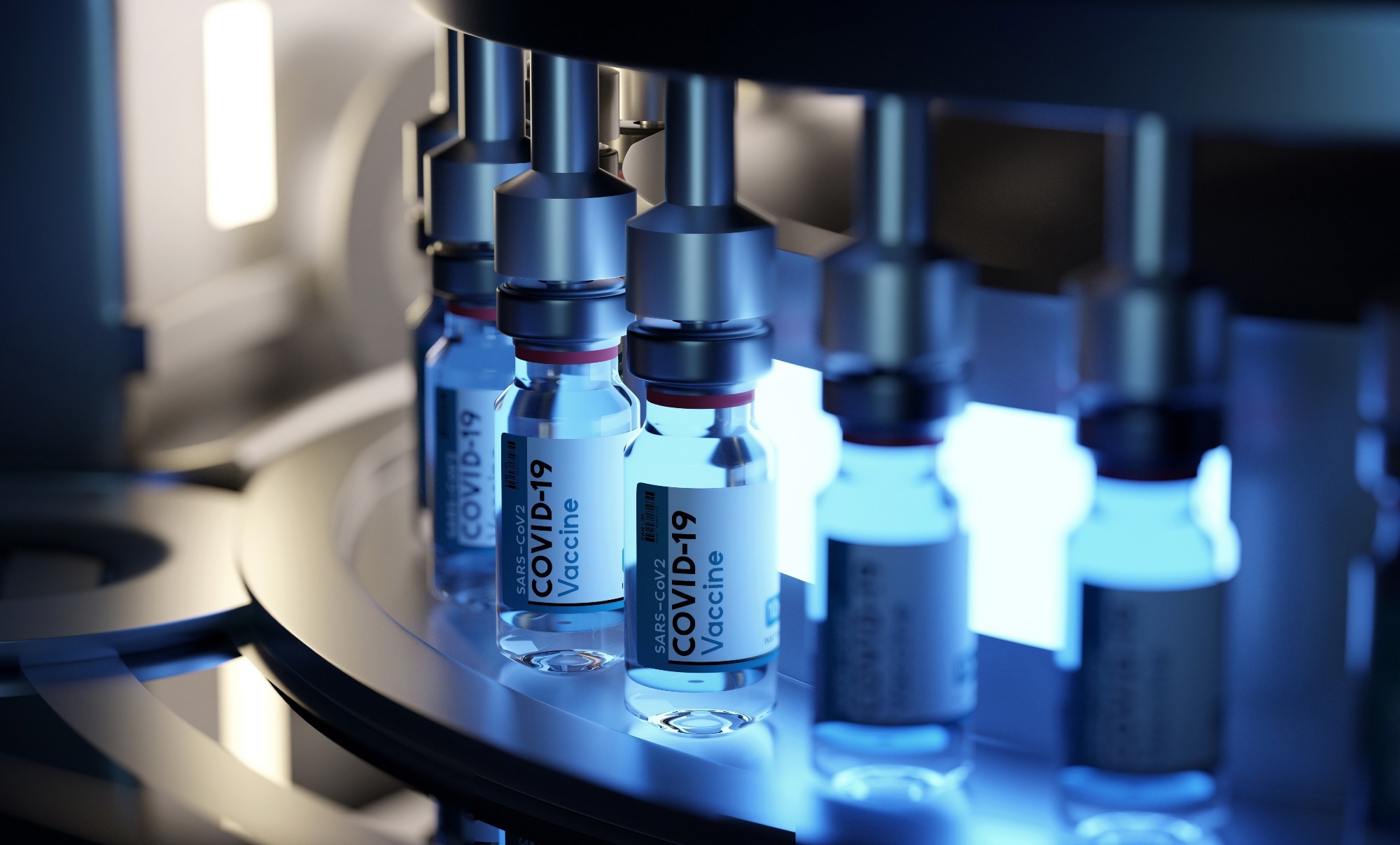In a recent study published in PNAS, researchers presented a scalable lipid nanoparticle (LNP) production (SCALAR) platform to produce high-throughput lipid nanoparticles on one microfluidic chip and develop severe acute respiratory syndrome coronavirus 2 (SARS-CoV-2) messenger ribonucleic acid (mRNA)-LNP vaccines.

LNPs have been developed as a powerful delivery method that has facilitated recent developments in mRNA treatments and vaccinations.
The advancement of formulation technologies to generate precise LNPs at a mass scale to translate the approach from discovery experiments to large-scale clinical trials and commercial manufacturing is a key challenge in the advancement of LNPs for RNA therapeutics and vaccines. This is difficult to achieve while meeting the pharmaceutical industry’s stringent manufacturing standards
About the study
In the present study, researchers developed an efficient microfluidic SCALAR platform to mass-produce SARS-CoV-2 mRNA-LNP vaccines.
The SCALAR microchip included 1, 10, or 256 LNP-generating units and was fabricated using glass and silicon, providing good solvent compatibility and pharmaceutical production compatibility. The concept included 256 herringbone-type micromixer units into a 100-mm chip of silicon, combining ladder design geometry with branching architecture.
The design lowered operating pressures by 40%, supplied fluids to and collected fluids from the mixing units, and ensured the parallelized chip’s safe and dependable functioning.
To separate the mixing unit design and the microfluidics necessary for parallelization, highly-fluid-resistant microchannels were added upstream of the devices.
SCALAR chips were used to create SARS-CoV-2 spike (S) protein-coding messenger ribonucleic acid lipid nanoparticle vaccines based on a standard formulation that included the United States Food and Drug Administration (US FDA)-authorized DLin-MC3-DMA (MC3) as the lipid to be ionized with phospholipid distearoylphosphatidylcholine (DSPC) and DMG-PEG 2000 to encapsulate polyA as a substitute for mRNA.
LNPs made using conventional PDMS chips or SCALAR chips were given intramuscularly to C57BL/6 mice in a prime-boost vaccination regimen utilizing mRNA incorporating N1-methylpseudouridine nucleoside modifications.
The proline-modified SARS-CoV-2 spike protein was encoded by the modified SARS-CoV-2 mRNA, and the mRNA coding sequence was comparable to that used in mRNA vaccines already approved by the FDA. Immunoglobulin G (IgG) titers, which indicate vaccination effectiveness, were determined using enzyme-linked immunosorbent assays (ELISA).
The parallelized chip included 256 mixing units that were linked to layers of channels that delivered the two inputs (lipids and RNA) and layers of channels that collected the formed LNPs. A customized pressure-driven system supplied reagents to the chip, with each mixing unit having considerably greater fluidic resistance than its upstream supply pathways.
Fluorescent imaging was used to validate the design concepts by analyzing the mixing performance of SCALAR chips. SCALAR chips were reused for RNA LNP formulations, with LNPs manufactured using ionizable lipids MC3, phospholipid distearoylphosphatidylcholine (DSPC), cholesterol, and DMG-PEG 2000 to encapsulate polyA as a replacement for mRNA.
To photograph LNPs and measure mRNA transport, cryo-transmission electron microscopy (TEM) and flow cytometry were used, respectively.
Results
Scalable production rates of precisely specified LNPs of ≤17.0 per hour were reached with no modifications in flow conditions or mixing geometry in comparison to one 1x chip.
The physical characteristics of mRNA LNPs were consistent across all SCALAR chip sizes (1x, 10x, and 256x), indicating the possibility of microfluidic chip use for mass-scale and repeatable manufacture of messenger ribonucleic acid lipid nanoparticles for vaccination and therapeutic purposes.
By attaining high production rates while reducing variances in LNP physical features or potency, the platform shows the ability to decrease the time from LNP optimization to clinical applications.
The chips were highly repeatable in manufacture and operation, showed resistance against enlargement and damage, and were suitable for high-temperature sterilizing methods, including autoclaving. The efficacy of LNPs generated using the SCALAR chips for mRNA transport in vivo was comparable to that of LNPs generated using the regular PDMS chip.
The manufacturing approach might parallelize multiple identical microfluidic devices, allowing for increased overall throughput scaling. All SCALAR chip scales revealed identical mixing efficiency, with no significant changes in physical attributes or mRNA transport efficacy to HepG2 cells.
The microfluidic-LNPs had a homogeneous, electron-rich morphology and were monodisperse in size distribution. Non-significant changes were observed in hydrodynamic size between LNPs formed by SCALAR 1, LNPs generated by SCALAR, and those produced using the PDMS system. Microfluidic chip LNPs had a greater relative efficacy of encapsulation (above 85%) than bulk-mixed ones (60%).
The mRNA-LNPs elicited considerable levels of anti-S1 IgG, and the efficacy of the vaccine was comparable across all formulation techniques. The findings suggest that the SCALAR technology might be used to rapidly create mRNA LNPs at various sizes for vaccination applications.
Since the manufacturing technique allowed for the parallelization of more than 20,000 identical microfluidic units, overall throughput could be increased by including additional mixing units onto one 100-mm microfluid-type chip, avoiding the use of more fluidic handling devices.
To simplify RNA LNP manufacturing, the lipid nanoparticle generation process might be coupled with other procedures (such as tangential flow filtering or dialysis). LNPs generated by microfluidic chips had a higher encapsulation efficiency (>85%) than bulk-mixed LNPs, which had a lower relative encapsulation efficiency (60%).
Based on the study findings, LNP-generated microfluidics could be translated to commercial production scale, enabling LNP-based RNA therapeutics and vaccines to address emerging pathogens and outbreaks, accelerating the development of nanoparticle formulations.










